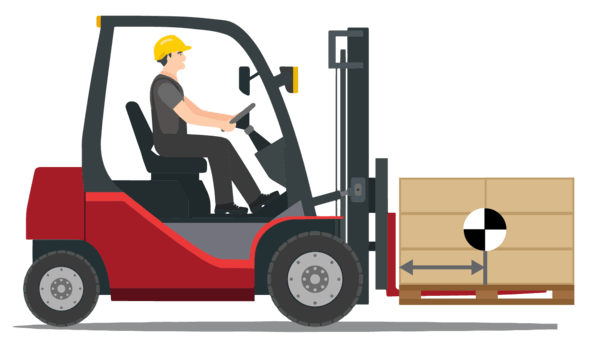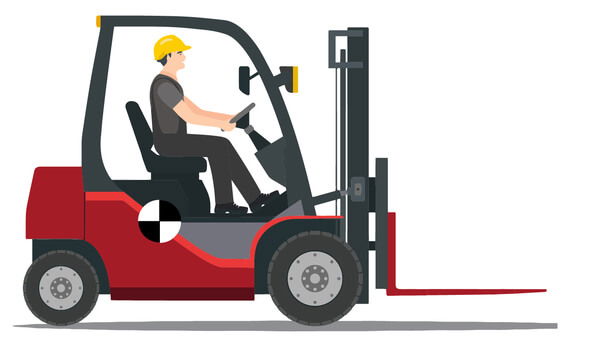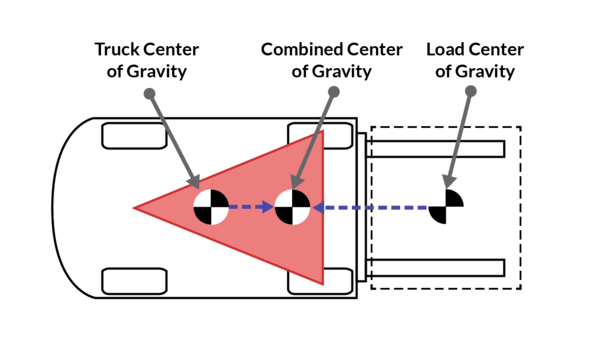Forklift Load Center & Load Capacity
Load center
The load center is the distance from the face of the forks to the load’s center of gravity. Many forklifts are rated using a 24-inch load center, which means that the load’s center of gravity must be 24 inches or less from the face of the forks.

Center of Gravity
The center of gravity is an imaginary point in an object where all of the object’s weight is concentrated.
In an unloaded forklift, the center of gravity is just below the operator’s seat.

Stability triangle
A forklift has a three-point suspension system. The points are found over both of the two load (front) wheels and midway between the rear wheels. When imaginary lines are drawn to connect them, what’s known as the stability triangle is formed. The operator must ensure that the center of gravity of the combined forklift and load remains within the stability triangle to guard against tipping over.

How to determine the load center of your forklift.
The process of finding your forklift load center is easy. Furthermore, it can save your company money and time. Therefore, to learn how to stack your loads for maximum efficiency, use the information from the forklift’s data plate. It will tell you: Distance from the center of the load Vertical mast Tilt to the right Height When you stack loads evenly, such as pallets, the load center will be in the middle of the load. Therefore, the load center for a 1000mm load would be 500mm. Based on the information on the data plate, you should also keep in mind the maximum height and length of a load. Additionally, only lift a load that exceeds the specified load center distance if it is considerably below the maximum weight.
Operating in a Secure Environment
Keeping weights low to the ground is a good practice to maintain safe and stable loads. In addition, traveling with caution when stopping, turning, and starting is an effective way to preserve stability. Also, don’t forget to fasten your seatbelt! On slopes, ramps, or other uneven terrains, always use extreme caution. Furthermore, never lift or turn a burden on an uneven surface. Your center of gravity will swiftly migrate outside of the stability triangle in such situations. As a rule, your forks should always be pointing downhill when riding empty on a ramp. Additionally, your forks should always be pointing toward the top of the ramp when carrying a load to avoid the load falling off. Finally, do not attempt to jump clear of a forklift if it begins to tip over while you are operating it. According to the most up-to-date research, it is better to stay in the vehicle’s interior and lean away from the direction you’re falling. In addition, you can brace your feet while gripping the steering wheel securely in order to maintain the safest position in the vehicle.


